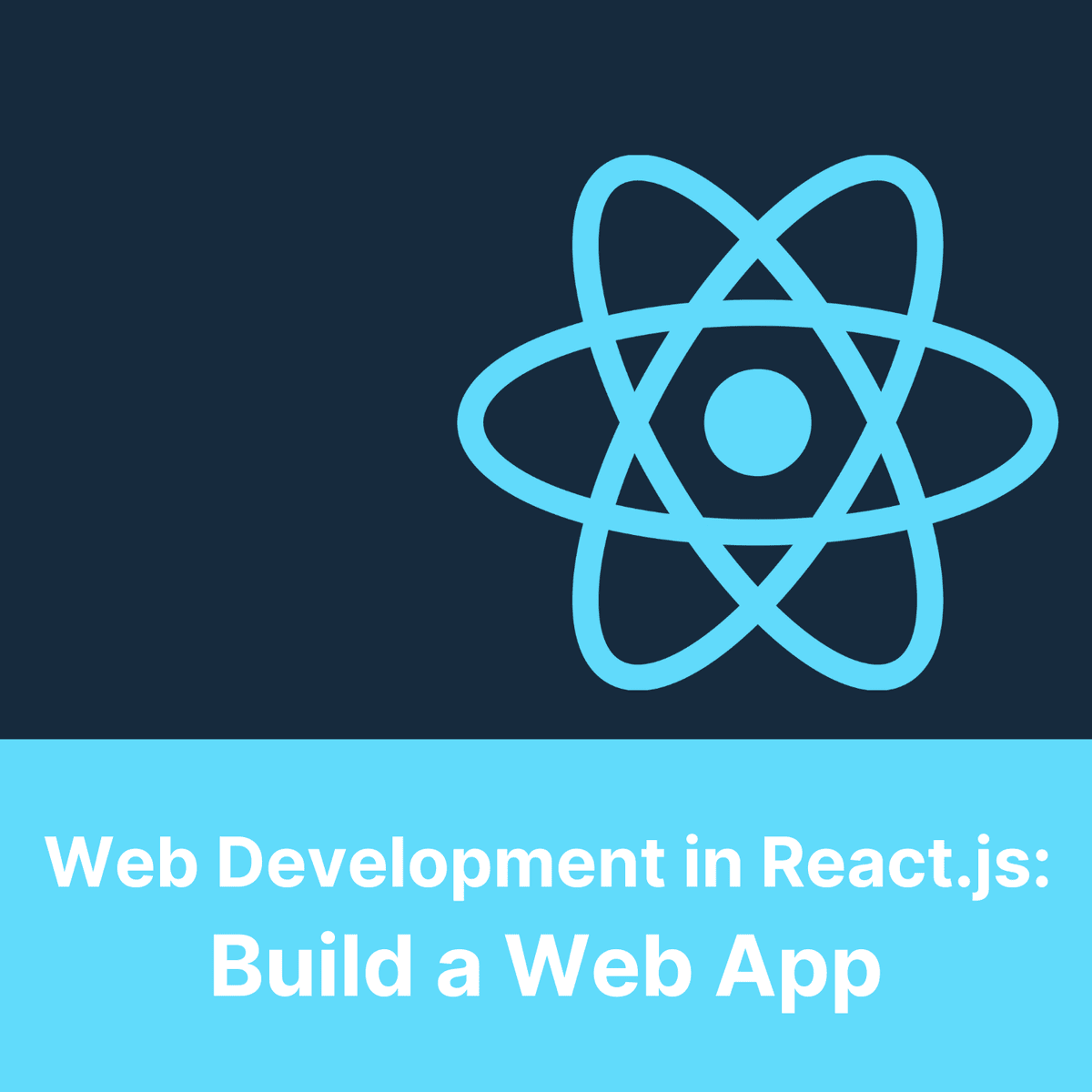Back-End Web Developer
Back-End Web Developer
Back-end web development involves building and maintaining the technology that powers websites and applications from behind the scenes. Think of it as the engine room of a ship; while you don't see it from the deck, it's responsible for making everything run. Back-end developers work on server-side software, focusing on databases, server logic, Application Programming Interfaces (APIs), and the overall architecture that users don't directly interact with but rely on for the application to function correctly.
Working as a back-end developer often involves solving complex problems related to data management, security, and system performance. It's a role that requires strong analytical thinking and technical expertise. You'll be building the core logic that dictates how data is stored, retrieved, and manipulated, ensuring that the user-facing front-end has what it needs to operate seamlessly. This often means collaborating closely with front-end developers, designers, and product managers to bring a web application to life.
Overview of Back-End Web Development
What is Back-End Development?
Back-end development refers to the server-side of web applications. It's everything that happens "behind the curtain" when you use a website or app. When you fill out a form, log into an account, or search for information, the back-end systems process your request, interact with databases, and send the appropriate information back to your browser or device.
The primary objective of back-end development is to create reliable, efficient, and secure systems that support the user-facing part of an application (the front-end). This involves writing code that runs on a server, managing databases where application data is stored, and building APIs that allow different software components to communicate with each other.
Essentially, back-end developers ensure the website or application functions correctly, performs well under load, and keeps user data safe. They are the engineers building and maintaining the core infrastructure that makes modern web experiences possible.
The Engine of Web Applications
Back-end development forms the core engine of any significant web application. It encompasses the server-side logic, which dictates how the application responds to user requests and processes information. This logic is usually written in programming languages like Python, Java, Ruby, or Node.js (JavaScript).
A major component is database management. Back-end developers design, implement, and manage databases (like MySQL, PostgreSQL, or MongoDB) to store and retrieve application data efficiently. This could be user profiles, product information, transaction records, or any other data the application needs.
Application Programming Interfaces (APIs) are another critical aspect. APIs act as communication channels, allowing the front-end (what the user sees) to interact with the back-end systems. Back-end developers design and build these APIs, ensuring data can flow smoothly and securely between different parts of the application or even between different applications.
Back-End vs. Front-End: Key Differences
Web development is often divided into two main areas: front-end and back-end. Front-end development focuses on the user interface (UI) and user experience (UX) – everything the user directly sees and interacts with in their browser. This includes layout, visual design, and interactivity, typically built using HTML, CSS, and JavaScript.
Back-end development, in contrast, deals with the server, database, and application logic. It's the "behind-the-scenes" work that ensures data is processed correctly, stored securely, and delivered to the front-end when needed. Back-end developers work with server-side languages, databases, and APIs.
While distinct, front-end and back-end development are deeply interconnected. A seamless user experience relies on both parts working together harmoniously. Some developers specialize in one area, while others, known as Full-Stack Developers, work across both front-end and back-end domains.
Core Skills for Back-End Web Developers
Essential Programming Languages
Proficiency in one or more server-side programming languages is fundamental for a back-end developer. Popular choices vary, each with its strengths and common use cases. Python is widely used due to its readability, extensive libraries (especially in data science and AI), and frameworks like Django and Flask.
Java remains a stalwart in enterprise environments, known for its robustness, scalability, and platform independence, often used with the Spring framework. JavaScript, traditionally a front-end language, has become a major back-end player thanks to Node.js, enabling full-stack development with a single language.
Other important languages include PHP (powering a large portion of the web, especially with WordPress), Ruby (known for the elegant Ruby on Rails framework), and C# (popular in the Microsoft ecosystem with .NET). Choosing which language(s) to learn often depends on industry trends, project requirements, and personal preference.
These courses provide foundational knowledge in key programming languages frequently used in back-end development.
Managing Data: Databases
Back-end developers are responsible for managing the application's data, which typically resides in databases. Understanding database concepts and technologies is crucial. There are two main categories: SQL (Relational) databases and NoSQL (Non-Relational) databases.
SQL databases, like MySQL, PostgreSQL, and SQL Server, organize data in structured tables with predefined schemas. They use Structured Query Language (SQL) for data manipulation and querying. They are well-suited for applications requiring complex queries and data integrity.
NoSQL databases, such as MongoDB, Cassandra, and Redis, offer more flexibility in data structure. They can handle large volumes of unstructured or semi-structured data and often provide better scalability and performance for specific use cases, like real-time applications or big data.
A back-end developer needs to know how to design database schemas, write efficient queries, optimize database performance, and choose the right type of database for the application's needs.
Building Bridges: APIs
Application Programming Interfaces (APIs) are essential for modern web development, acting as contracts that allow different software systems to communicate. Back-end developers design, build, and maintain APIs that expose the application's functionality and data to the front-end or other services.
A common architectural style for APIs is REST (Representational State Transfer). RESTful APIs use standard HTTP methods (GET, POST, PUT, DELETE) to perform operations on resources. Understanding REST principles and designing clean, well-documented APIs is a core skill.
Developers work with data formats like JSON (JavaScript Object Notation) or XML for exchanging information through APIs. They also need to consider aspects like authentication, authorization, rate limiting, and versioning to ensure APIs are secure, reliable, and maintainable.
Collaboration and Workflow: Version Control & DevOps Basics
Software development is rarely a solo effort. Back-end developers need tools and practices for effective collaboration and managing code changes. Git is the industry standard for version control, allowing developers to track changes, revert to previous states, and collaborate on codebases efficiently using platforms like GitHub or GitLab.
Understanding basic DevOps principles is also increasingly important. DevOps aims to shorten the development lifecycle and provide continuous delivery with high software quality. This involves practices like continuous integration (CI), continuous deployment (CD), automated testing, and infrastructure management.
While dedicated DevOps engineers often handle the full pipeline, back-end developers benefit from understanding these concepts. Familiarity with containerization tools like Docker and orchestration platforms like Kubernetes can also be advantageous for deploying and scaling applications.
Tools and Technologies
Frameworks: Building Efficiently
Back-end frameworks provide pre-written code and structures that streamline the development process. They handle common tasks like routing requests, managing database interactions, and handling security, allowing developers to focus on application-specific logic. Different languages have popular associated frameworks.
For Python developers, Django is a high-level framework known for its "batteries-included" approach, offering many built-in features. Flask is a lighter-weight alternative, providing more flexibility. In the JavaScript world, Node.js itself is a runtime environment, but frameworks like Express.js are commonly used to build web applications and APIs.
Java developers often rely on the Spring Framework, particularly Spring Boot, for building robust enterprise applications. Ruby developers frequently use Ruby on Rails, known for its conventions and rapid development capabilities. Choosing a framework depends on the project's requirements, team familiarity, and the chosen programming language.
These courses cover popular frameworks used to accelerate back-end development.
Database Systems in Practice
Beyond understanding SQL and NoSQL concepts, back-end developers need practical experience with specific database management systems (DBMS). PostgreSQL is a powerful open-source relational database known for its standards compliance and extensibility. MySQL is another widely used open-source relational database, popular for web applications.
On the NoSQL side, MongoDB is a leading document database, storing data in flexible, JSON-like documents. It's often chosen for applications needing schema flexibility and scalability. Other NoSQL options include Redis (an in-memory data structure store often used for caching) and Cassandra (a distributed database designed for high availability).
Developers interact with these databases using specific drivers or Object-Relational Mappers (ORMs) / Object-Document Mappers (ODMs) provided by their programming language or framework. These tools help abstract database interactions and map data to application objects.
The Cloud and Containers
Modern applications are frequently deployed on cloud platforms rather than on-premises servers. Familiarity with major cloud providers like Amazon Web Services (AWS), Microsoft Azure, or Google Cloud Platform (GCP) is increasingly valuable. These platforms offer services for computing, storage, databases, networking, and more.
Back-end developers often use cloud services to host their applications, manage databases, and scale resources dynamically. Understanding core cloud concepts like virtual machines, serverless functions (e.g., AWS Lambda, Azure Functions), and managed database services is important.
Containerization technologies, primarily Docker, have become standard for packaging applications and their dependencies. Containers ensure consistency across different environments (development, testing, production). Kubernetes is a popular platform for automating the deployment, scaling, and management of containerized applications.
Explore Cloud Computing courses to learn more about deploying and managing applications on platforms like AWS and Azure.
Ensuring Quality: Testing and Debugging
Writing code is only part of the job; ensuring it works correctly and reliably is equally important. Back-end developers employ various testing strategies, including unit testing (testing individual code components), integration testing (testing how components work together), and end-to-end testing (testing the entire application flow).
Frameworks often come with built-in testing tools, and dedicated testing libraries exist for most languages. Writing automated tests helps catch bugs early, prevents regressions (reintroducing old bugs), and provides confidence when making changes to the codebase.
Debugging is the process of finding and fixing errors in code. Developers use debugging tools, logging techniques, and browser developer tools (even for back-end issues manifesting in the front-end) to diagnose problems. Strong debugging skills are essential for resolving issues efficiently.
Formal Education Pathways
University Degrees for Aspiring Developers
A common route into back-end development is through a university degree. Programs in Computer Science provide a strong theoretical foundation, covering algorithms, data structures, computation theory, and systems design – all relevant to back-end work.
Software Engineering degrees focus more specifically on the principles and practices of designing, developing, testing, and maintaining software systems. These programs often include practical projects and coursework directly applicable to roles like back-end development.
While a degree is not always mandatory, especially with the rise of skills-based hiring, it provides structured learning and a recognized credential. According to Zippia data cited by Coursera, 71% of developers hold a bachelor's degree, suggesting it remains a prevalent pathway [2]. However, practical skills and portfolio projects are often equally, if not more, important to employers.
Key Academic Subjects
Certain subjects within Computer Science or Software Engineering curricula are particularly relevant for back-end developers. Data Structures and Algorithms are fundamental, teaching how to organize data efficiently and devise effective procedures for solving computational problems.
Courses on Database Systems cover the theory and practice of designing, implementing, and managing databases. Operating Systems courses provide insight into how computers manage resources, which is crucial for understanding server environments.
Networking courses explain how data travels across networks, essential for understanding web communication protocols like HTTP. Software architecture and design principles teach how to structure complex software systems for maintainability, scalability, and reliability. Experience with these topics provides a solid theoretical underpinning for practical back-end tasks.
Advanced Studies and Research
For those interested in pushing the boundaries of technology or pursuing specialized roles, advanced degrees like a Master's or PhD can be beneficial. Master's programs often allow for specialization in areas like distributed systems, database technology, cybersecurity, or artificial intelligence, deepening expertise relevant to complex back-end challenges.
A PhD involves original research and is typically pursued by those interested in academia or research-oriented roles in industry labs. Research areas relevant to back-end development might include performance optimization, large-scale data management, cloud computing architectures, or system security.
While not necessary for most back-end developer roles, advanced studies can open doors to specialized positions, research opportunities, and potentially higher earning potential in certain fields.
Self-Directed and Online Learning
Can You Teach Yourself Back-End Development?
Absolutely. While a formal degree is one path, becoming a back-end developer through self-study and online resources is increasingly common and entirely feasible. The wealth of information available online, including tutorials, documentation, and online courses, makes self-teaching accessible.
The key is discipline, structure, and persistence. It requires identifying the necessary skills, finding quality learning resources, and dedicating consistent time to learning and practice. Platforms like OpenCourser aggregate thousands of courses, making it easier to find relevant educational content.
Success often hinges on building practical projects to apply learned concepts and creating a portfolio to showcase skills to potential employers. While challenging, the self-taught route offers flexibility and can be significantly more cost-effective than traditional education. Many successful developers have forged their careers this way.
These courses offer comprehensive introductions suitable for those starting their web development journey, including back-end concepts.
Learning by Doing: Project-Based Strategies
Theoretical knowledge is important, but practical application is where learning solidifies. Building projects is arguably the most effective way to learn back-end development. Start with small, manageable projects and gradually increase complexity as skills grow.
Ideas include building a simple blog, a to-do list application with user accounts, a basic e-commerce site, or an API for a specific purpose. These projects force you to integrate different technologies (language, framework, database, API) and solve real-world problems.
Contributing to open-source projects is another excellent way to gain experience, learn from others, and build a portfolio. Focus on understanding the "why" behind technical choices, not just the "how." Document your projects well, host them online (e.g., on GitHub), and be prepared to discuss them during interviews.
These project-based courses allow you to apply back-end skills in a hands-on environment.
Showcasing Skills: Certifications and Portfolios
For self-taught developers or those pivoting careers, demonstrating skills is crucial. A well-curated portfolio showcasing completed projects is often more impactful than a list of attended courses. Include links to live demos (if possible) and the source code on platforms like GitHub.
Industry certifications, while not always required, can validate specific skills (e.g., cloud platform certifications from AWS, Azure, or GCP). They can add credibility to your resume, especially when lacking a formal degree or extensive professional experience.
Participating in coding communities, contributing to discussions, and networking can also help build visibility. Ultimately, employers want to see evidence that you can apply your knowledge to build functional, reliable back-end systems. A strong portfolio combined with the ability to articulate your technical decisions is key.
OpenCourser's Learner's Guide offers tips on building a portfolio and leveraging online learning effectively.
Career Progression for Back-End Web Developers
Starting Out: Entry-Level Roles
Most individuals begin their back-end career in a junior developer role. Junior Back-End Developers typically work under the guidance of more senior team members, focusing on smaller, well-defined tasks. Responsibilities often include writing code for specific features, fixing bugs, writing unit tests, and learning the team's codebase and development processes.
This stage is crucial for building foundational skills, gaining practical experience with team workflows (like version control and code reviews), and understanding how theoretical concepts apply in real-world scenarios. Expect to spend significant time learning and asking questions.
Entry-level salaries vary by location and company, but sources like PayScale and Coursera suggest starting salaries around $61,000 to $90,000 in the US, with significant potential for growth [21] [35]. Building a solid foundation and demonstrating a willingness to learn are key to advancing from this stage.
Growing Expertise: Mid-Career Paths
After gaining a few years of experience (typically 2-5 years), developers often progress to mid-level or Senior Back-End Developer roles. At this stage, they take on more complex tasks, work with greater autonomy, and may start mentoring junior developers. Responsibilities can include designing system components, making architectural decisions for specific features, optimizing performance, and leading smaller projects.
From a senior role, several specialization paths open up. Some developers deepen their technical expertise, becoming experts in specific domains like database optimization, system architecture, or cloud infrastructure. Others might move into related roles like DevOps Engineer, focusing on automation and infrastructure, or Solutions Architect, designing high-level system structures.
Salary increases significantly with experience. Senior roles often command salaries well above $100,000, with averages potentially reaching $115,000 or more, depending on factors like location, industry, and specific skills [1] [35]. Continuous learning remains vital to stay relevant and progress.
Reaching the Top: Leadership Opportunities
Experienced back-end developers with strong technical and leadership skills can move into management or high-level technical roles. Technical leadership paths might include Principal Engineer or Staff Engineer, roles focused on setting technical direction, solving the most challenging problems, and mentoring across teams.
Management tracks involve roles like Engineering Manager, Director of Engineering, or even Chief Technology Officer (CTO) in smaller companies or startups. These roles shift focus from hands-on coding towards leading teams, setting strategy, managing budgets, and aligning technology with business goals.
These leadership positions require not only deep technical understanding but also excellent communication, strategic thinking, and people management skills. Compensation at these levels can be very high, often including significant bonuses or equity, reflecting the level of responsibility.
Industry Trends Impacting Back-End Development
The Rise of Serverless Computing
Serverless architecture is a major trend reshaping back-end development. Instead of managing servers, developers write code in the form of functions that are executed by a cloud provider (like AWS Lambda, Azure Functions, Google Cloud Functions) in response to events. The provider handles all infrastructure management, scaling, and patching.
This model offers potential benefits like reduced operational overhead, automatic scaling based on demand, and often lower costs (pay-per-execution) [4] [19]. Developers can focus more on writing application logic rather than managing infrastructure.
However, serverless also introduces new challenges, such as managing state, potential vendor lock-in, and different debugging and monitoring approaches. Back-end developers increasingly need to understand when and how to leverage serverless architectures effectively.
AI's Role in the Back-End
Artificial Intelligence (AI) and Machine Learning (ML) are increasingly influencing back-end development. AI-powered tools like GitHub Copilot assist developers by suggesting code snippets, automating repetitive tasks, and even helping with debugging [4] [6]. This can potentially boost productivity and efficiency.
Beyond tooling, AI/ML models are being integrated into back-end systems themselves for tasks like personalized recommendations, fraud detection, predictive analytics, and optimizing database queries [19]. Back-end developers may need to collaborate with data scientists or ML engineers to integrate these models or even develop basic ML skills themselves.
While AI is unlikely to replace developers entirely, it is becoming a powerful assistant and a component within applications. Understanding how AI can be leveraged in back-end systems is becoming increasingly important. You can explore this further with courses like Artificial Intelligence.
This course specifically explores the intersection of AI and back-end development.
Navigating Security and Privacy
Cybersecurity remains a critical concern, and back-end systems are often prime targets due to their access to sensitive data and core application logic [26]. Developers must prioritize security throughout the development lifecycle, implementing practices like secure coding, input validation, proper authentication and authorization, and data encryption.
Global data privacy regulations, such as the GDPR (General Data Protection Regulation) in Europe and CCPA (California Consumer Privacy Act), impose strict requirements on how user data is collected, stored, and processed. Back-end developers need to understand these regulations and build systems that comply with them.
Trends like Zero Trust Architecture, which assumes no implicit trust and requires verification for every access request, are gaining prominence [19]. Staying updated on security best practices and emerging threats is an ongoing responsibility for back-end professionals. You can find courses on Cybersecurity to deepen your knowledge.
Challenges in Back-End Development
Scaling and Performance Hurdles
Ensuring an application can handle a growing number of users and requests without slowing down is a constant challenge. As applications scale, back-end systems can encounter bottlenecks in database performance, server capacity, or inefficient code [26] [33].
Optimizing for performance involves various techniques: refining database queries, implementing caching strategies (storing frequently accessed data in faster memory), load balancing (distributing traffic across multiple servers), and potentially redesigning parts of the system architecture.
Designing for scalability from the outset is crucial, often involving choices between horizontal scaling (adding more servers) and vertical scaling (upgrading existing servers) or adopting architectures like microservices. This requires careful planning and ongoing monitoring.
Dealing with the Past: Legacy Systems
Many organizations rely on older software systems, often referred to as legacy systems. Maintaining and updating these systems can be a significant challenge for back-end developers. Legacy codebases may lack documentation, use outdated technologies, or be tightly coupled, making changes risky and difficult [26].
Developers might need to integrate new features with old systems, migrate data, or gradually refactor parts of the legacy code. This requires careful analysis, thorough testing, and sometimes specialized knowledge of older technologies.
Working with legacy systems can be less glamorous than building new applications, but it's a common reality in many industries and requires strong problem-solving skills.
Working Together: Collaboration
Back-end developers rarely work in isolation. Effective collaboration with various teams is essential but can present challenges. Communication with front-end developers is crucial to ensure APIs meet their needs and data is exchanged correctly [17] [23].
Collaboration with product managers is needed to understand requirements and translate them into technical solutions. Working with DevOps engineers ensures smooth deployment and operation. Interaction with QA testers is vital for identifying and fixing bugs.
Differences in technical understanding, priorities, or communication styles can lead to friction. Strong communication skills, empathy, and a willingness to understand different perspectives are key to navigating these collaborative complexities successfully.
Security and Ethical Considerations
Protecting User Data
Back-end systems often handle sensitive user data, making data protection a paramount responsibility. Developers must implement robust security measures to prevent unauthorized access, data breaches, and misuse of information.
Best practices include encrypting data both in transit (using HTTPS) and at rest (in the database), securely hashing passwords, implementing strong authentication and authorization mechanisms, and sanitizing user inputs to prevent common attacks like SQL injection or cross-site scripting (XSS).
Regular security audits, vulnerability scanning, and staying updated on the latest security threats are essential. A security-first mindset should permeate the entire development process, from design to deployment and maintenance.
The Ethics of Code
The logic built into back-end systems can have significant real-world consequences, raising ethical considerations. Algorithms might inadvertently perpetuate biases present in training data, leading to unfair or discriminatory outcomes in areas like loan applications, hiring, or content recommendations.
Developers have a responsibility to consider the potential societal impact of their work. This involves being aware of potential biases, striving for fairness and transparency in algorithms where possible, and considering the ethical implications of data collection and usage practices.
Building ethically requires careful thought, diverse perspectives within development teams, and a commitment to prioritizing user well-being and fairness alongside technical requirements.
Staying Compliant
Various laws and regulations govern data handling, privacy, and security. Back-end developers need to be aware of and ensure compliance with relevant regulations, which can vary depending on the industry and geographic location of users.
Regulations like GDPR, CCPA, HIPAA (for healthcare data in the US), and others impose specific requirements on consent, data access, data deletion, and breach notifications. Designing and building systems that meet these requirements is crucial to avoid legal penalties and maintain user trust.
This often involves working closely with legal and compliance teams to understand the requirements and implementing technical measures to enforce them within the back-end systems.
Frequently Asked Questions (Career Focus)
Do I need a degree?
A formal degree (like Computer Science or Software Engineering) is a common path but not strictly mandatory to become a back-end developer. Many successful developers are self-taught or come from coding bootcamps.
Employers increasingly focus on demonstrable skills, practical experience, and portfolio projects. While a degree provides structured learning and theory, what matters most is your ability to build, test, and maintain functional back-end systems.
However, some companies, particularly larger or more traditional organizations, may still prefer or require a degree for certain roles. Regardless of your educational path, continuous learning and skill development are essential throughout your career.
How does salary change with experience?
Salaries for back-end developers generally increase significantly with experience. Entry-level roles typically offer competitive starting salaries, often ranging from $60,000 to $90,000+ in the US, depending on location and company [21] [35].
After gaining a few years of experience and moving into mid-level roles (1-6 years), salaries often climb well above $100,000, with averages around $101,000-$109,000 reported [35]. Senior developers (7+ years) can command even higher salaries, often exceeding $116,000-$120,000 on average, with top earners making considerably more [35].
Factors like specialization (e.g., cloud, security, specific languages), industry, company size, and location also heavily influence compensation. Leadership roles naturally come with higher earning potential.
Can front-end developers switch to back-end?
Yes, transitioning from front-end to back-end development is a common and viable career move. Front-end developers already possess foundational web knowledge (HTML, CSS, JavaScript) and often have experience interacting with APIs from the client-side.
The transition involves learning server-side programming languages (like Python, Java, Ruby, or Node.js if not already proficient), database concepts (SQL/NoSQL), server management basics, API design principles, and security best practices.
Many developers become "full-stack," proficient in both areas. Starting with Node.js can be a natural progression for JavaScript-focused front-end developers, allowing them to use the same language on the back-end.
Which industries hire the most back-end developers?
Back-end developers are in demand across nearly every industry that utilizes web technology. The tech industry itself (software companies, internet services, SaaS providers) is a major employer.
Finance and banking rely heavily on robust and secure back-end systems for online banking, trading platforms, and data processing. E-commerce businesses need sophisticated back-ends to manage products, inventory, orders, and payments.
Other significant sectors include healthcare (for electronic health records, patient portals), entertainment (streaming services, gaming), education (online learning platforms), and government. Essentially, any organization with a significant online presence or internal software systems likely employs back-end developers.
How does remote work impact this career?
Back-end development is highly conducive to remote work, and this trend has accelerated significantly. Many companies now offer fully remote or hybrid roles for developers [14]. This provides flexibility in location and schedule [5] [7].
Remote work allows companies to access a global talent pool and developers to access opportunities beyond their local area [5] [9]. While challenges exist around communication and collaboration, tools and practices for distributed teams are well-established.
Research suggests many developers feel more productive working remotely and value the improved work-life balance [11] [9]. The prevalence of remote work makes back-end development an attractive career for those seeking flexibility, although some companies are pushing for return-to-office mandates [14].
Will AI replace back-end developers?
It's highly unlikely that AI will completely replace back-end developers in the foreseeable future. While AI tools can automate certain tasks, assist with coding, and improve efficiency, they currently lack the critical thinking, complex problem-solving, architectural design skills, and understanding of business context that human developers provide [4].
AI is more likely to augment developers' capabilities, becoming a powerful tool rather than a replacement. Developers who learn to leverage AI effectively may become more productive and valuable.
The role might evolve, requiring developers to focus more on higher-level design, system architecture, security, ethical considerations, and overseeing AI-generated code, but the need for skilled human developers remains strong.
Useful Links and Resources
Continuing your journey into back-end development involves ongoing learning and engagement with the community. Here are some resources:
- OpenCourser: Explore thousands of courses on Programming, Computer Science, Databases, and Cloud Computing. Use the "Save to List" feature to curate your learning path.
- GitHub: Essential for version control, collaboration, and hosting your portfolio projects. Explore open-source projects to learn from others.
- Stack Overflow: A vast Q&A community for programmers. A great resource for finding solutions to specific technical problems.
- Developer Blogs and News Sites: Stay updated on trends through reputable tech news sites and blogs from companies like Google, AWS, Microsoft, and influential developers.
- BLS Occupational Outlook Handbook: For US-based job market data, the Bureau of Labor Statistics provides projections for web developers and digital designers.
Embarking on a career as a Back-End Web Developer is a challenging yet rewarding path. It requires a blend of technical expertise, problem-solving skills, and continuous learning. Whether you pursue formal education or a self-directed route, focusing on building practical skills and a strong portfolio is key. The demand for skilled developers remains high across industries, offering ample opportunities for growth and impact in shaping the digital world.














